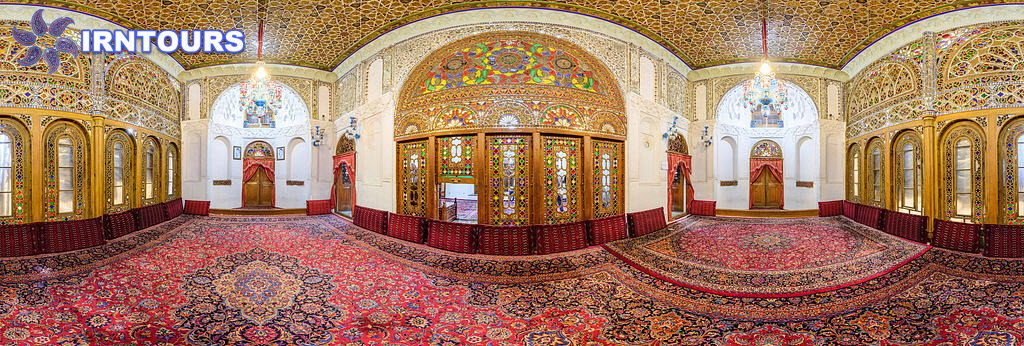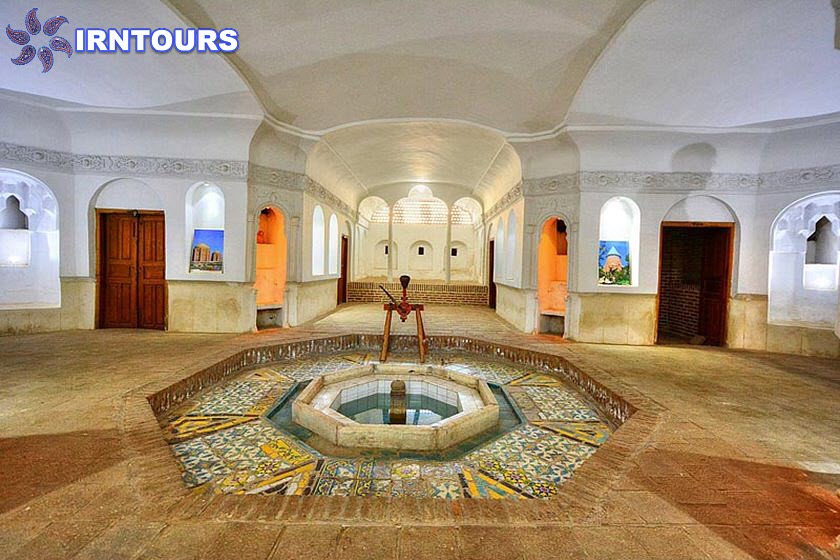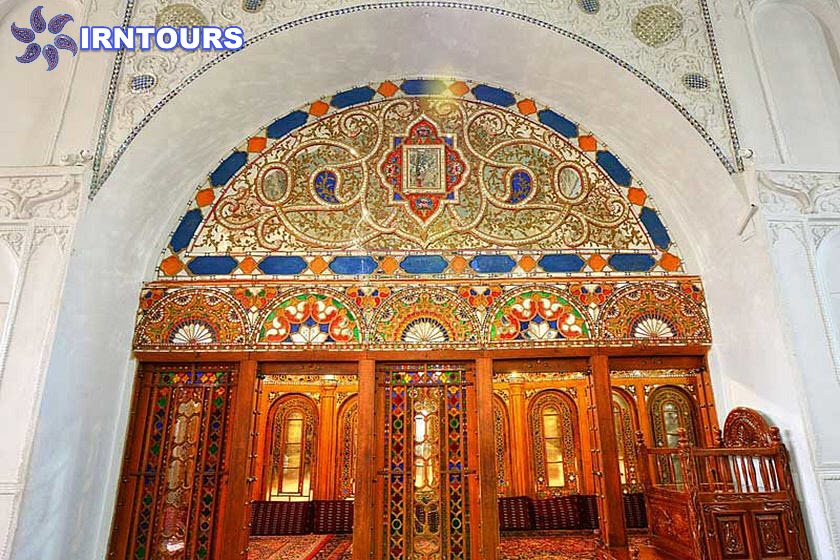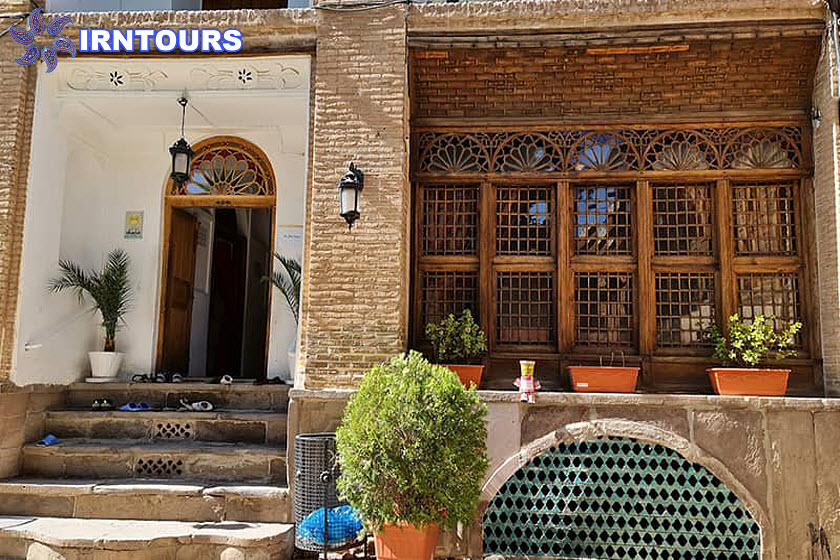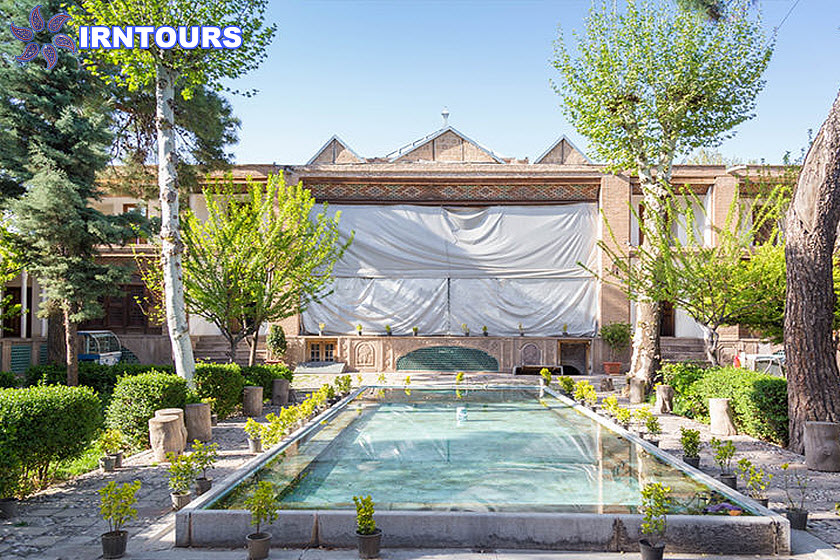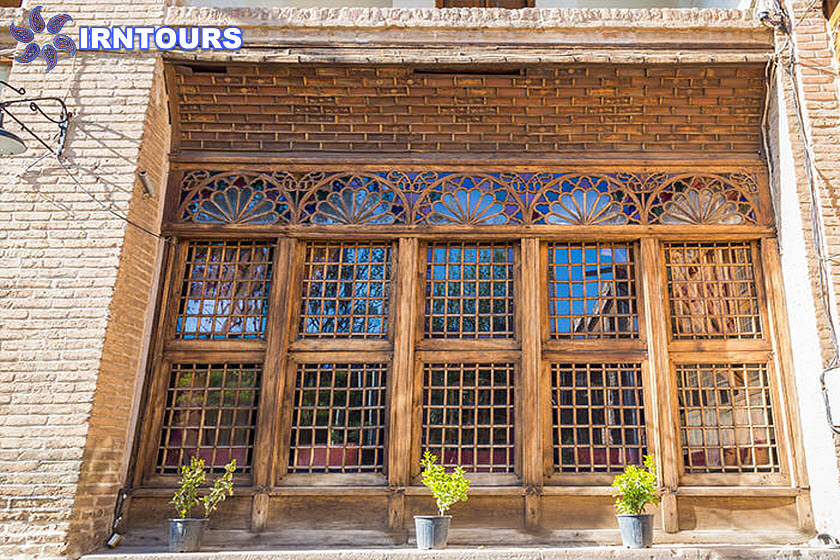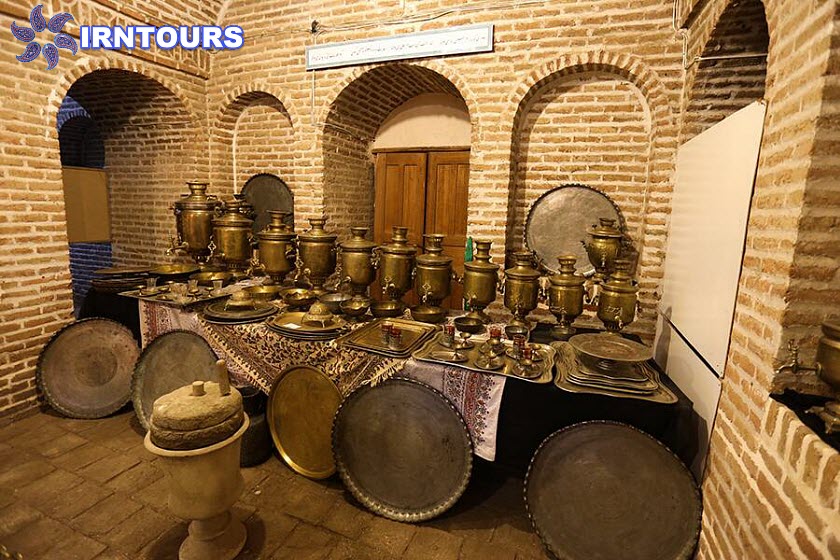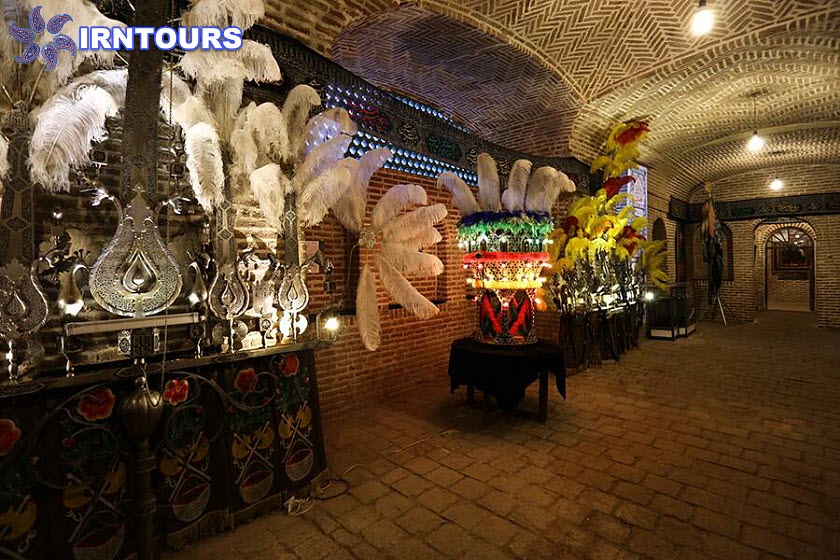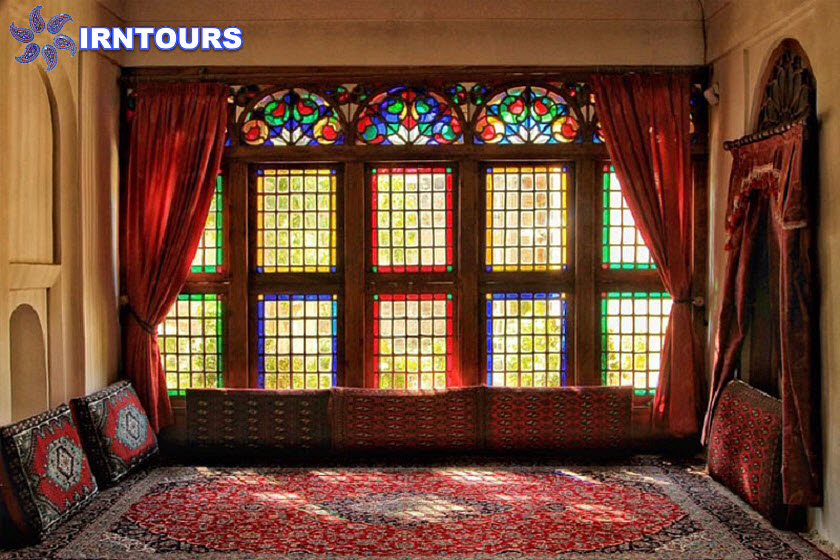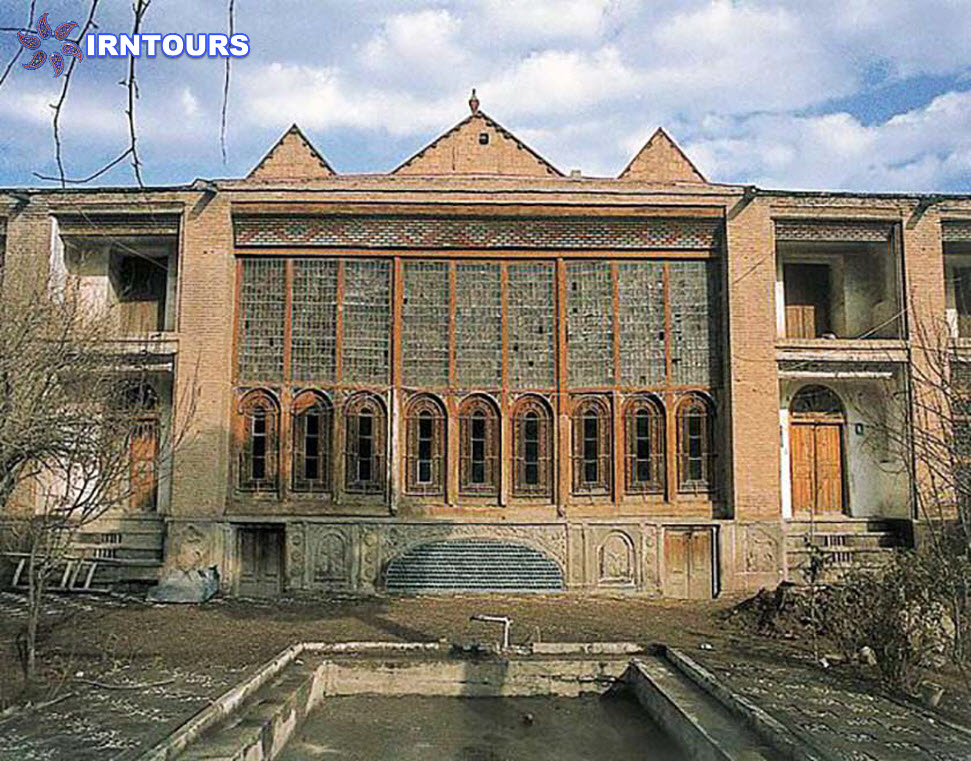

About Aminiha Hosseiniyeh
Hosseinieh Aminiha is one of the tourist attractions of Qazvin, which was included in the list of national monuments of Iran on February 21, 1949. When you enter through the wooden door of the house, you have to go down a few steps to step into a tree-filled and clean yard with a large pond. Many tourists who visit this building for the first time spend a few minutes taking pictures next to this large pond.
Next, you have to take off your shoes and reach the halls of the mansion through the corridor. After that, you can enter the main hall with the expert. There is a wooden barrier at the beginning of the entrance door. In the past, when the guests entered this hall for the first time, they would look in front of their feet to be careful and in this way they would pay homage to the residents of the house unintentionally. In addition to sashes that are made with very luxurious and old wood, you will enjoy watching luxurious chandeliers, antique carpets, etc.
Where is Aminiha Hosseiniyeh ?
Hosseinieh Aminiha is located in Molavi neighborhood, which can be reached by taxi or private vehicle. The bus station located on Montazeri street is also not far from Hosseinieh.
- Hosseinieh Aminiha is located in Molavi Qazvin street, between Haj Mohammadi and Mohammad Montazeri streets.
History of Aminiha Hosseiniyeh
Hosseinieh and Amini’s house is one of the beautiful and noble houses of Qazvin, which was built by Haj Mohammad Reza Amini, one of the rich people of Qazvin, with the amount of 48,000 Tomans, west of the Dezaj River. The construction of this building dates back to 1859.
Later, during the first Pahlavi period, they filled the Dezaj river and built Molvi Street instead. Amini’s house, a part of which was dedicated to Hosseinieh in 1859, is a perfect example of a Qazvini house, which today has been changed to Hosseinieh. This house was so big and luxurious that it apparently covered a huge part of the current Molvi street, and only a part of it remains today.
According to a tradition, Naser Al-Din Shah Qajar was supposed to visit this house, which worried Haj Amini. Because he knew that if the king is interested in the house, he has no choice but to offer it. As a result, he vows that if the house is not lost, he will dedicate it to Imam Hossein (a.s.) and turn it into Imam Hussainiyah. When the king visits, he praises the house; But no one offers it. When he asked the reason, he was informed that the house was dedicated to Imam Hussain (AS).
The late Haji Mohammadreza Amini dedicated six dongs from two villages and two dongs from another village to this Hosseiniyya for prayer during Muharram and feeding the poor during Muharram and Safar.
Interestingly, the said house still has the function of Hosseiniyah and hosts the mourning of Imam Hossein (AS) for two decades in Muharram and Safar. In addition, they feed people in this place during Ramadan.
Architecture of Hosseinieh Aminiha
Amini’s house is a historical building with two floors, ground floor and basement. The southern part of the house was the garden yard, around which was the house of the brothers and sisters of Haj Mohammadreza Amini. After that, you can see the Hosseinieh courtyard, the halls, and then the inner courtyard. On both sides of the halls, the pantry and the courtyard of the pantry, Haj Aghaei’s room and the teahouse were built. Around the inner courtyard, there were kitchens, reservoirs, etc. The barn was in a space almost separate from the main building and close to the Dezaj river. The western part of the outer courtyard was also related to the tunic and bathroom space.
Four courtyards and two inner and outer mansions remain from that glory and power. The outer mansion or Hosseinieh of the Aminis is the main reason for tourists to visit the house of the Aminis.
One of the most interesting things to know about the architecture of this house is the shooting part; In such a way that the hatch emptied the loads on the roof and there was a valve to guide the load. The arrangement of the bricks and their precise design prevented the load from being damaged until it reached the bottom of the roof.
Different sections of Hosseinieh Amini :
In Hosseinieh Aminiha, three halls have been built which are parallel to each other from east to west and are located between two north and south courtyards. The middle hall, 18 meters long and five meters wide, is bigger than the other two halls, and the two northern and southern halls are each 10 meters long and five meters wide. At the eastern and western ends of each of the halls, two small rooms have been built. The halls of this mansion have very beautiful sashes, which were raised when fasting, so that in this way, all three halls become one. Under the halls, a cellar, a pantry and a warehouse have been built.
- South Hall : The south hall leads on either side to rooms for the ladies of the mansion to watch the funeral from. Of course, the left part is called Haj Aghaei’s room; The place where the worshipers and the leaders of the ceremony wait for their turn to perform.
This hall has two chandeliers and four three-pronged crystal chandeliers. The south hall opens to the south courtyard with a 9-hole sash on one side, and a five-door sash connects this space to the main hall on the other side. Looking at the top of the five-door sashes, you will notice circular patterns. 6 circles are made on a sash and 6 circles are made on the sash of the northern hall. Interestingly, each of these circles is a symbol of one of the twelve towers. The north sash of the hall shows the first six months of the year and the south sash shows the second six months. The masterpiece of the story is when it turns out that the sunlight shines on these colored windows from outside. As the sun focuses on the sash, the fish symbol illuminates where you are. It can be said that this calendar is one of the most intelligent effects of Amini’s mansion. - North Hall : The north hall, similar to the south hall, is related to the main hall and is just like the south hall in terms of dimensions and size.
- middle hall : In terms of beauty, the central hall is the bride of the Emini palace. In the middle of the ceiling of this hall, a beautiful chandelier stands out, on both sides of which, a painting on wood can be seen. This crystal and candle-burning chandelier dates back to more than 160 years ago. This beautiful lantern with the dominant color of blue has created a lot of harmony with the wooden design of the ceiling.
- Underground : Under the triple halls, there is a brick basement that houses different and important parts of the house. There is an octagonal basin in the middle of the basement. The design of the central part of the basement is in the shape of a cross.
In the western part of the basement, the kitchen of the mansion is located. Hot food was cooked in the kitchen and taken to the halls or inside. Next to the kitchen, there was a reservoir and in its northern part, there was a storage room. A pantry was also intended for storing food and also for the rest of the cook.
An interesting thing that you will encounter when visiting the basement cellar is the very cool atmosphere in the summer season. In this place, you can see a small pond where sweet watermelons and delicious fruits were once placed to cool down in its cold water. In addition, in this cellar, there is a special place for air conditioning and even a place for cats to pass, which shows the unique and intelligent Iranian architecture at that time. - The pantry : The pantry and its yard are located on both sides of the halls. In this place, they prepared all kinds of drinks such as tea, butter, and syrup for various ceremonies. The dishes used in Hosseinieh were also kept in this place. The yard between the pantry and the halls was the connecting path between these two parts of the house, which over time has become a place to keep chickens, roosters and other animals.
- Home tea maker : In the eastern part of the middle hall, a teahouse or tea house was built. This place was used to prepare tea and it was the place where samovars and assemblies were kept. The teahouse can be seen before entering the pantry yard.
- earrings : The south and north halls have a section called earring, which is the women’s space of the hall. Women used to sit in these rooms to watch the ceremony.
Amini’s Hosseinieh decorations :
The southern hall of the mansion with 9 sash openings and colored glass is considered an artistic masterpiece, and its ceiling is so elaborately mirrored and painted that it dazzles the eyes of every viewer.
The middle hall has niches and bowl shelves decorated with mirror work and stucco, which is connected to the north and south halls by two five-doors, and twelve towers are carved in the semi-circle above the five-doors. The ceiling of this hall is divided into three parts, the middle part has stucco decorations with mirror work, and the other two parts have paintings on wood, which are knotted with the help of mirrors.
The hand-woven carpets of the halls are all one piece with original and antique motifs and designs. The backs and carpets of the central hall are a gift from Astan Quds to Hosseiniyeh. Embossed decorations can also be seen in the stone plinths of the north and south courtyards of the mansion.
Tips for visiting Hosseinieh Aminiha :
- When visiting this historical building, you can take advantage of its guide’s explanations.
- The visiting hours of Hosseinieh Aminiha are from 9 to 13 and 16 to 18. This Hosseinieh is closed from 13:00 to 16:00 and the manager and guide of the mansion does not allow visitors during these hours.
- During times of mourning, Hosseinieh has a ceremony and there is a possibility of changing the hours.
- You must take off your shoes before entering the building.
- In this building, there are separate men’s and women’s toilets.
- Qazvin Grand Mosque or Antique Mosque, Bilour Bath, Qazvin Museum, Sardar Reservoir, Imamzadeh Hossein (AS) and Imamzadeh Ismail (AS) tombs are among the attractions near Hosseiniyeh.

